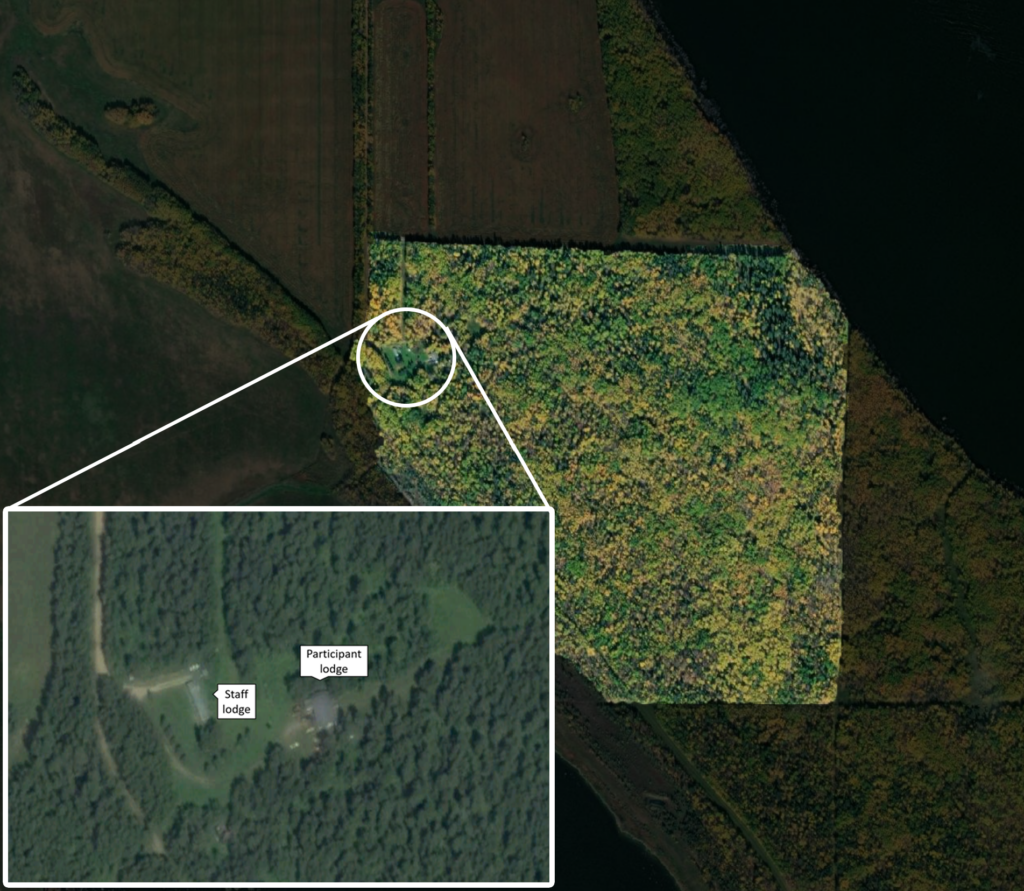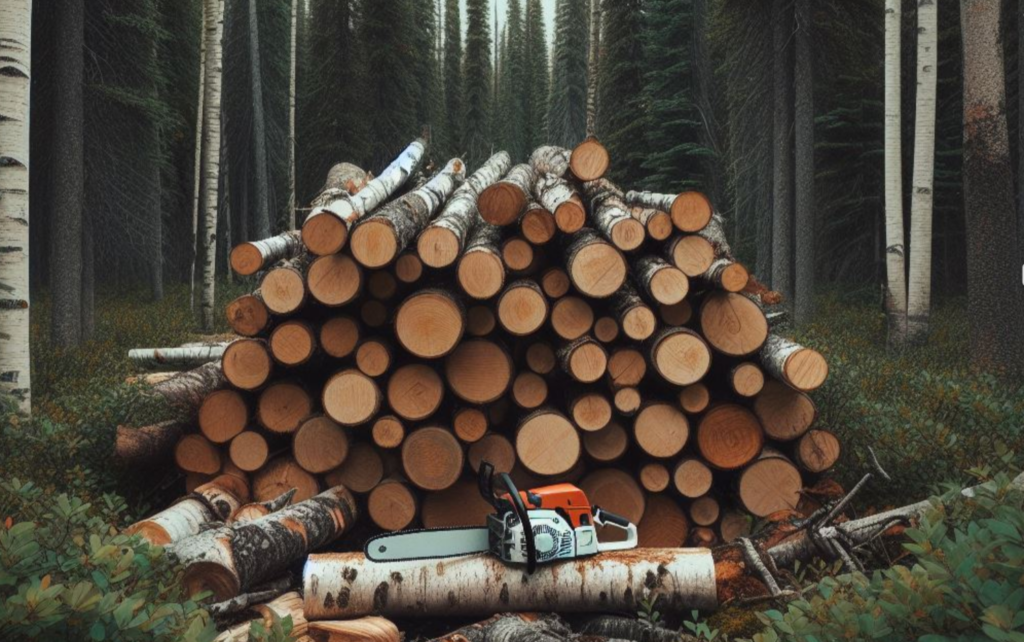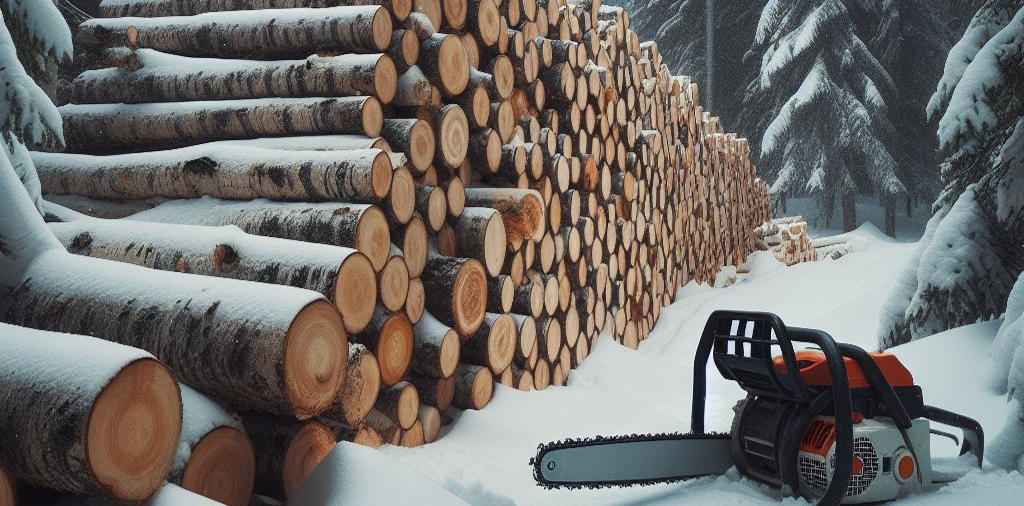The land that Canaan Land Big River sat on was just about 125 acres. As far as the eye could see, trees filled the property. The only clearing was where our housing occupied. Aspen, white Spruce, white Birch, Jack Pine, and Balsam Fir trees covered every inch of the forest we lived on. With such a variety to pick from, it was the job of participants and teenage youth of the Canaan Land program to harvest these sources of wood to fuel our furnace throughout the long cold Saskatchewan winters – it was a matter of our survival according to “warden” Jim.
It was the job of participants and teenage youth of the Canaan Land program to harvest these sources of wood to fuel our furnace throughout the long cold Saskatchewan winters – it was a matter of our survival according to “warden” Jim.

Each year we needed to collect about 12 cords of wood if we wanted to remain alive and warm throughout the following winter. A cord is the amount of wood that is well-stacked at 4 feet high, 8 feet wide, and 4 feet deep. And we needed about 12 of those to last the winter. The thicker and more cured each log was, the longer it would last overnight to heat the furnace. So our goal was not to collect just a bunch of branches and sticks, but mainly the large, heavy trunks of whole trees. Live “green” trees were no good since they would take well over a year to age and dry up enough to burn. Our primary catch were the old dead trees that were already fallen, and standing trees that showed signs of dying. These proved to dry the fastest over the summer months and would be burnable by time winter arrived.

In the tangled forest, with bushes and branches poking and tripping you at every step, removing the standing & fallen trees proved to be a tricky job. Fallen trees were often deep inside the bush, and they had snaggy branches sticking out into every direction. Unless you removed all the branches, they would love to stab you in the legs and torso and catch on every bush and tree around. So we used hatchets, the chainsaw, and our hands and feet to cut and break-off as many of the limbs off of the logs as we practically could until it was in decent shape to begin hauling out of the dense brush.
The trees weighed hundreds of pounds, depending on their thickness, length, and stage of drying. If it was short or small enough, one youth could haul it out by wrapping an arm around the front of it and dragging its back-end through the brush into the nearest clearing. Other trees were so long and thick and heavy that they needed to be cut into shorter lengths. The chainsaw would be used to cut a 60-90 foot log into 8, 16, or 20-foot lengths (depending on their weight) to make them possible to be lifted & carried. In summer, the branches of nearby bushes would catch on the chainsaw and whip the operator or cause a mishap. In winter, the deep snow had to be cleared all around the trunk of the tree before the chainsaw could safely do its job without risk of a dangerous kickback. Once ready for hauling, one youth would wrap their arms around the front of the log to lift it, and another would do the same with the back end. Then we would slowly high-step and stumble our way in tandem through the bushes or snow towards the nearest clearing, zig-zagging hundreds of pounds of segmented log around the other trees. Branches, sticks, and thorny brushes occasionally whipped us along the way. In summer, the mosquitoes in the humid bush pestered us all day. In winter, huffing and puffing in the frigid air made my lungs throw a coughing fit. We quickly learned to shout a warning to our partner if we tripped and dropped our end of a heavy log before the other person’s end would violently buck out of their arms as your end abruptly slammed into the ground.
We quickly learned to shout a warning to our partner if we tripped and dropped our end of a heavy log before the other person’s end would violently buck out of their arms as your end abruptly slammed into the ground.
Some of the trees that were still standing were dead enough that we could have a fun challenge with them. Most of the time they had to be cut down with the chainsaw, but if a massive tree was just at the right stage of the end of its life we could play with it for a few moments and feel like human bull-dozer! We learned that some dead trees had just enough give to them so that when you pushed REALLY hard, the top would begin to rock back and forth. As you watched the top of the massive tree begin to rock, you could start to push back against the rhythm as it swayed. Back and forth and back and forth, each sway of the treetop showed signs that it was rocking further and further as you pushed harder into it. After a few moments of swaying action, a satisfying pop would come from the base of the tree near the roots. With another push or two, the 60-90 foot tall giant would crack at the base and slowly and epically topple over to meet its final horizontal resting place in the forest below with a mighty crash. That sound and feeling was sublimely satisfying! What we didn’t realize, is that trees can fight back and try to crush you for doing that. One day while using all our strength to rock a dead tree back and forth to cause its fall, I heard a loud crack. Except this time the crack came from the top of the tree instead of the bottom. I stepped back and turned to look upward just in time to see the top third of the tree hurtle itself into the ground right next to us like a 100lb javelin! Lesson learned, and magically nobody got seriously hurt.
I stepped back and turned to look upward just in time to see the top third of the tree hurtle itself into the ground right next to us like a 100lb javelin!
At the end of the lumberjacking day, all those logs had to get dragged hundreds of meters through the bush back to the bucking area near the woodpile. In summer we had a truck to haul the logs part of the way, but in the hip-deep snow of winter it was all done manually on foot using a sledge. We would pile hundreds of pounds of logs into the sledge, and then heave on the ropes on the front as we waded through the snow with the massive load. After stumbling through the snow and catching our breath a few times, we arrived at the bucking area near the woodpile and unloaded the logs. Then we turned back to haul the next load across the forest until we got them all.

After a few days of collecting a sizeable log pile, a day or two would be spent bucking and stacking them. Each log was way too long to fit into the furnace, so we would use the chainsaw to buck them into 4 foot lengths so that they could dry properly and fit. For hours, the roar of the chainsaw would rattle our ear-drums as log after log was cut to size, showering us with flying woodchips and sawdust. We never had hearing protection, and I can still hear the ringing of tinnitus in my ears to this day. Once all the logs were bucked into the appropriate size, we carried them in armfuls to the nearby woodpile and stacked them into 4x8x4 cords for optimal drying and curing.
As I look back at my teen years of working the land and harvesting our own fuel from the 125-acre woods of Canaan Land, I can’t help but notice how absurd it all was – a church-school in Saskatchewan that sent youth away in the late 90’s to harvest trees to stay warm in winter. Instead of schooling, homework, and normality, I had to spend hours each day worrying if I was working hard enough for the winter ahead. At least four of us were under 18 (13, 15, 15, and 16 years-old), yet only four adults attended the place while I was there. I had a home and family only a couple of hours away in Saskatoon who were more than happy to let me live with them if it were permitted. Of course, the only reason why three of us youth were in the program was due to the control of pastor Keith Johnson. It never should have been allowed to happen, but our church-school’s principal Lou Brunelle, its “teachers” like Duff Friesen, and our church’s youth-pastor Shian Klassen enabled Keith’s unreasonable actions. The other two youth came from the Prince Albert church-school, which was essentially just an extension of Keith’s Saskatoon setup. One thing was for certain; there was no good reason for us to be lumberjacking the 100-acre woods instead of being in a classroom where we belonged.

